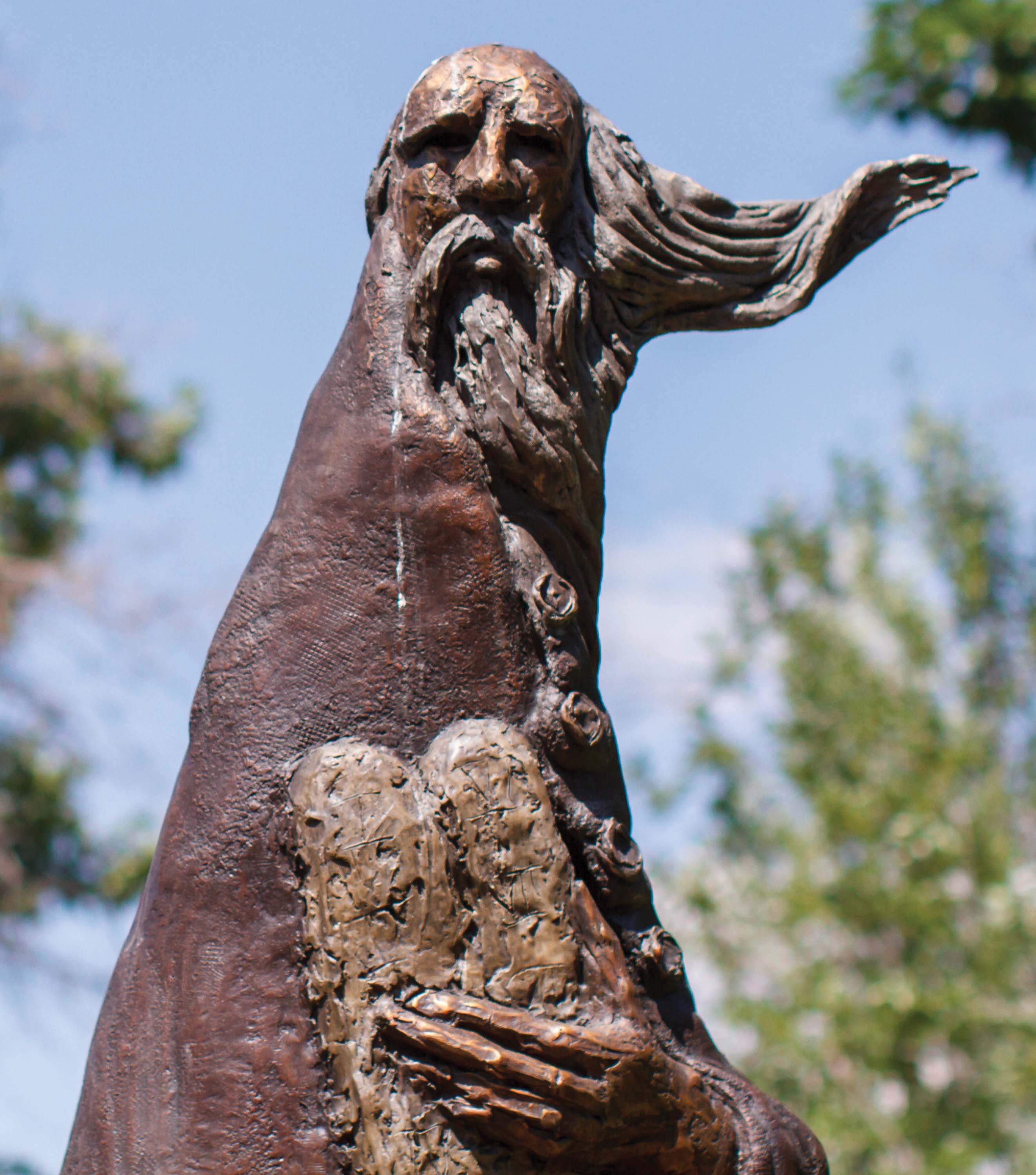
06 Mar Sacred Space
THE SPRAWLING BACKYARD OF Paul and Bonnie Zueger’s Tudor-style home, which sits on an acre just south of Denver in the suburb of Greenwood Village, fit their needs perfectly for many of the 30 years they have lived there. Complete with a fenced-in tennis court and a sparkling swimming pool, it provided entertainment for their five kids as they were growing up.
However, when Paul and Bonnie became empty nesters, the art aficionados, who have been in the art business for 40 years and own galleries in Aspen, Vail, Beaver Creek and Santa Fe, envisioned another use for the space: a sculpture garden.
“I’ve always been impressed with sculpture gardens,” explains Bonnie. “Every time you see one, it just feels so good. It’s something that inspires you. I knew the sculpture garden was something we could do that would bring us so much more joy.”
Paul, who has been collecting art for 60 years, had begun amassing a collection of bronze sculptures by a number of favorite artists. “We love sculpture, and we have a lot of pieces that we enjoy from artists that we’ve dealt with,” notes Paul.
But it was the 97-inch bronze of Noah, created by revered Western and biblical sculptor Gib Singleton — whom the Zuegers exclusively represent — that intensified Bonnie’s desire to transform their old tennis court into a stunning sculpture garden. “When he did Noah life-sized, I knew I needed it,” Bonnie says.
The Zuegers took a lot of inspiration for their personal plein air art museum from the sculpture garden at the Washington, D.C., countryside estate of American master sculptor Frederick Hart. The Zuegers enlisted landscape designer Holly Terry, of Designscapes Colorado, to transform their backyard into an enchanting and whimsical outdoor oasis.
It took a couple of summers and about a thousand plants and flowers to revamp the space. Today, the lush garden features 13 different sculptures from the Zuegers’ favorite artists, including Gib Singleton, Frederick Hart, Earl Biss, Tuan, Frank Howell, Desjardins, Renzo and Markus Pierson.
The garden is anchored by Bonnie’s beloved Noah, which sits at the entryway to the lawn. “We made Noah his own space at the main axis of the garden with paths weaving all around him,” says Terry. “It’s almost as if he’s leading you somewhere.”
Terry says it was important, particularly around the Singleton sculptures, for the plantings to share the emotion of the art. As Singleton puts it, “There’s basically two ways of viewing something. Looking at it and seeing what you see, or looking at something and seeing what you feel. That feeling is where I try to put my work.”
To enhance the emotional experience of the overall garden, Terry used purposefully planted vegetation along with nightscape lighting to help soften the presence of the bronze works and to “create life around them” so they would blend more organically into the residential setting. The scale and placement of the botanical backdrops embedded around the most hulking pieces of art help ground the sculptures.
For instance, Terry planted an alley of Chanticleer pear trees and knockout roses to create a tunnel-like effect leading to Singleton’s 8-foot-tall Moses. Creeping thyme is utilized to soften the stepping stones around the sculptures throughout the garden. Snowy white blooms of Annabelle hydrangea beam in stark contrast to the remorsefulness emoted by Singleton’s bronze, Eve.
Additionally, butterfly bushes, catmint, lavender, spireas, penstemons, hyssops and red valerian attract winged wildlife to the
garden in the form of hummingbirds, butterflies and bees. Under the centrally located pergola, which was added during the project, aromatic plantings, such as thyme, lavender and 20 different varieties of tea roses, add a heavenly scent.
It all works together to create what Paul refers to as a spiritual retreat. “It’s a great place to take your morning coffee or breakfast,” he notes. “And it’s not just for us; we like to share it with our children, grandchildren and friends.
We’ll continue to add to the garden, but we’ll always make sure that it’s aesthetically nice.”
- “Chanson Bust” is a sculpture by one of the Zuegers’ favorite artists, Frederick Hart. Hart’s gardens, which they toured shortly after he died, provided a lot of inspiration for the couple’s private sculpture garden.
- Standing more than 8 feet tall, “Noah” made a big impact on Bonnie Zueger, in part because of the connection it illustrates between man and animals. (click to enlarge view)
- This bevy of bronzes (from foreground to background) “Meditation, Melody and Memory” is by Vietnamese artist, Tuan. The Zuegers say their eclectic art collection is made up of pieces they enjoy, as well as artwork that reminds them of artists with whom they have worked.
- The Zuegers’ home sits on about an acre. Bonnie notes that art lovers don’t have to have a big yard or a huge collection to make their favorite sculptures “come to life.”
- Because Gib Singleton’s “Eve” is so stark, the landscape architect used foliage to soften the overall experience.
- Sculptor Gib Singleton says “Noah” is in part about the biblical story of Noah’s ark. “But there’s another level, too, which is the battle between good and evil. Between doubt and faith. That’s why Noah has a dove in one hand and has his other hand on a goat,” Singleton explains.





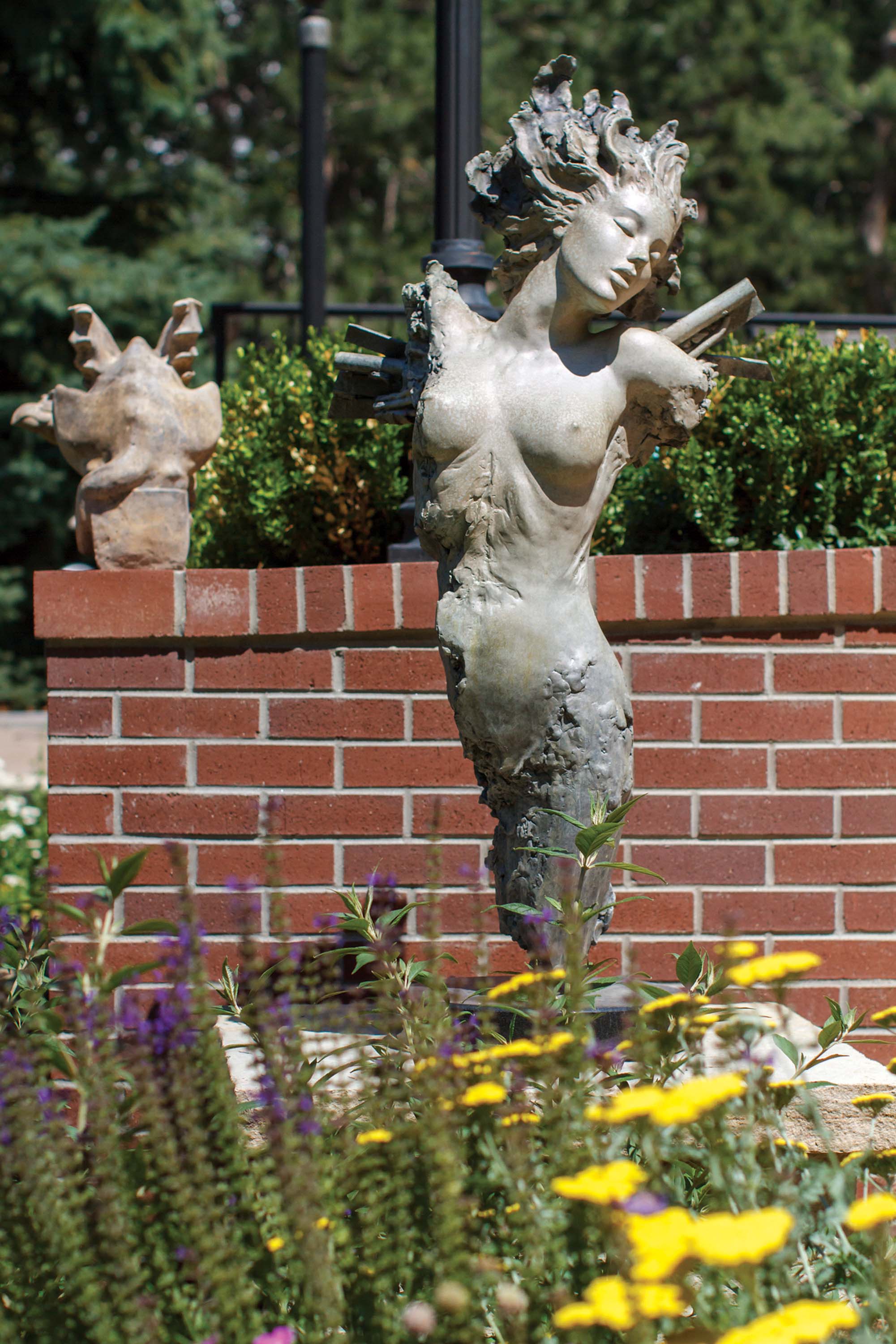
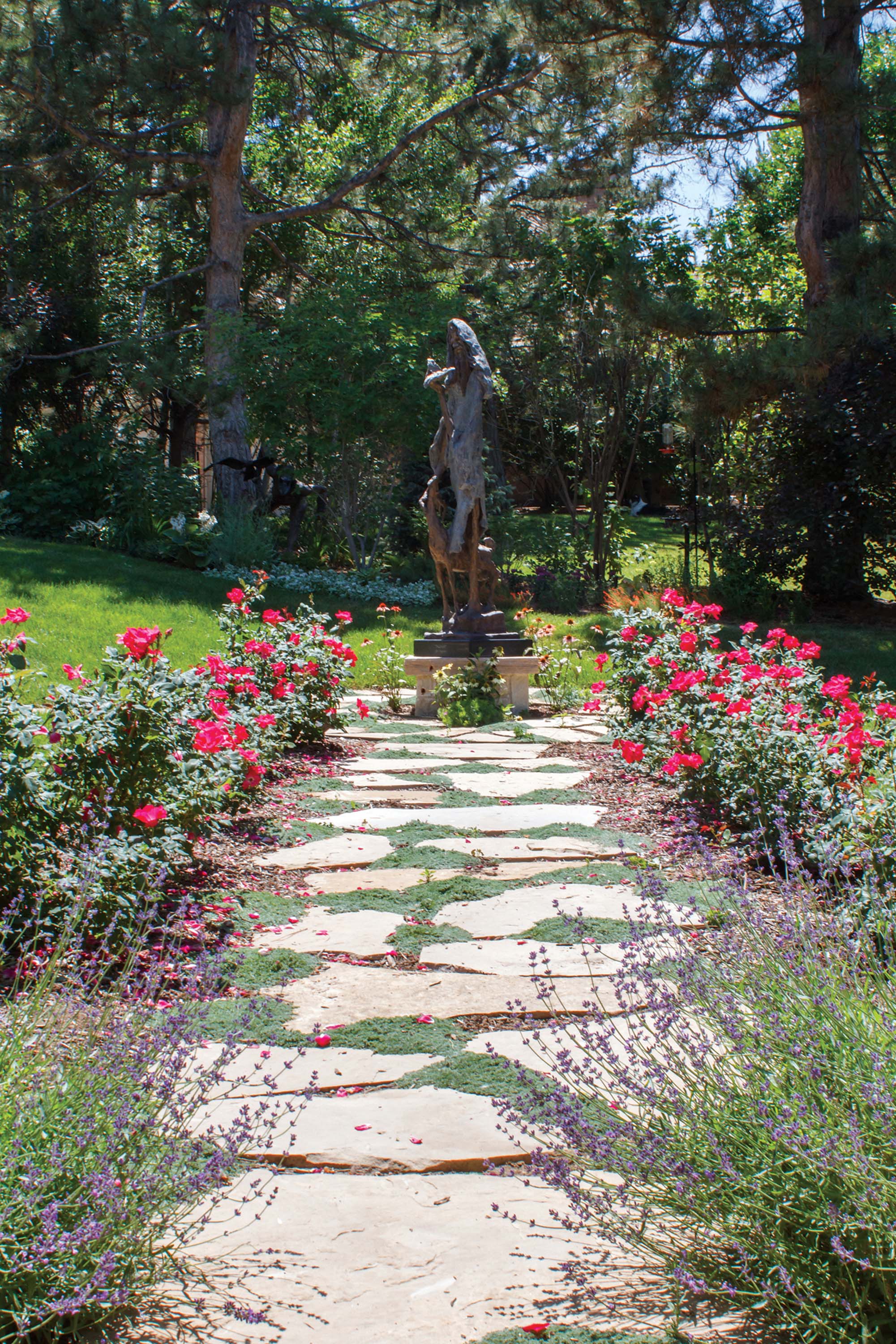
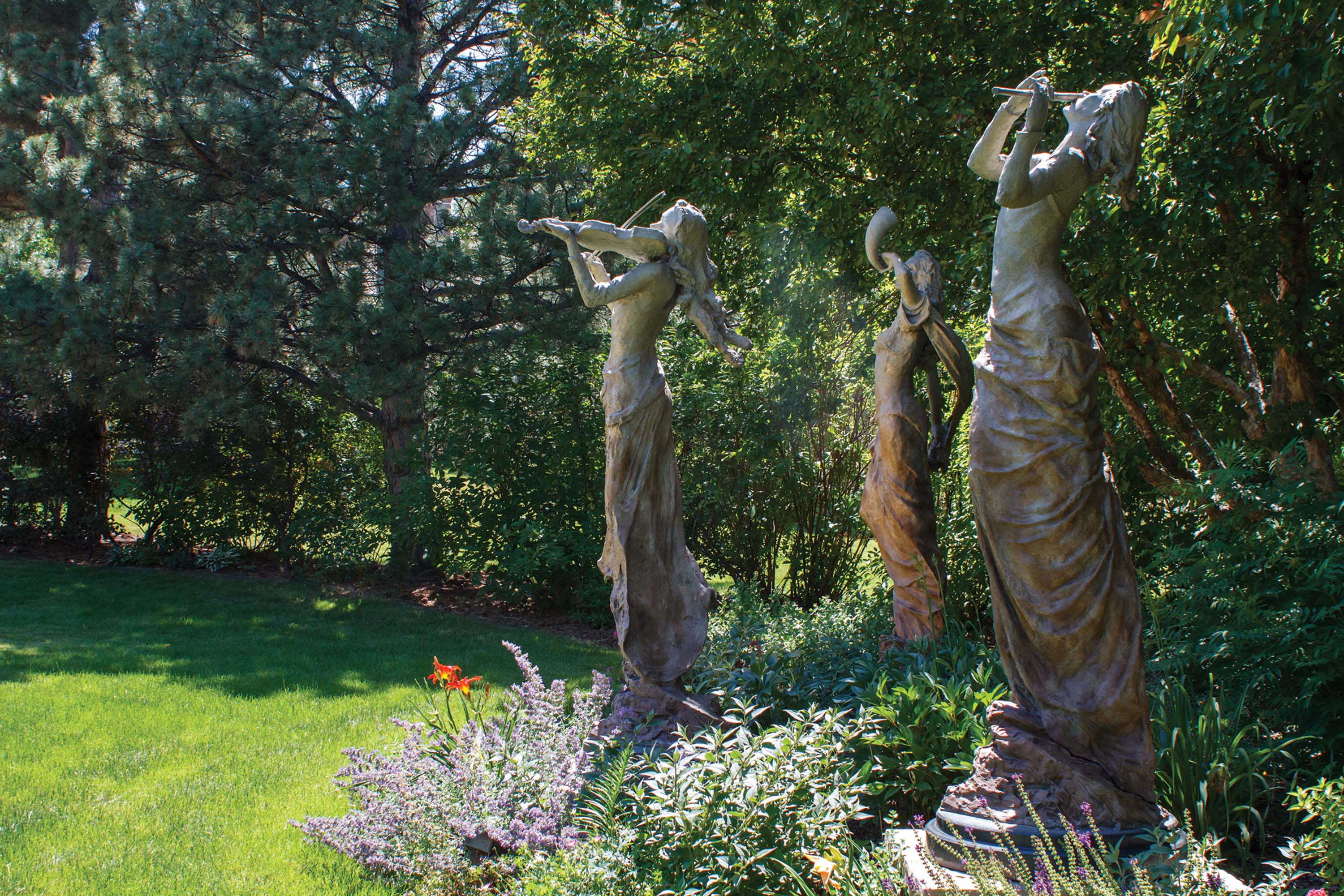
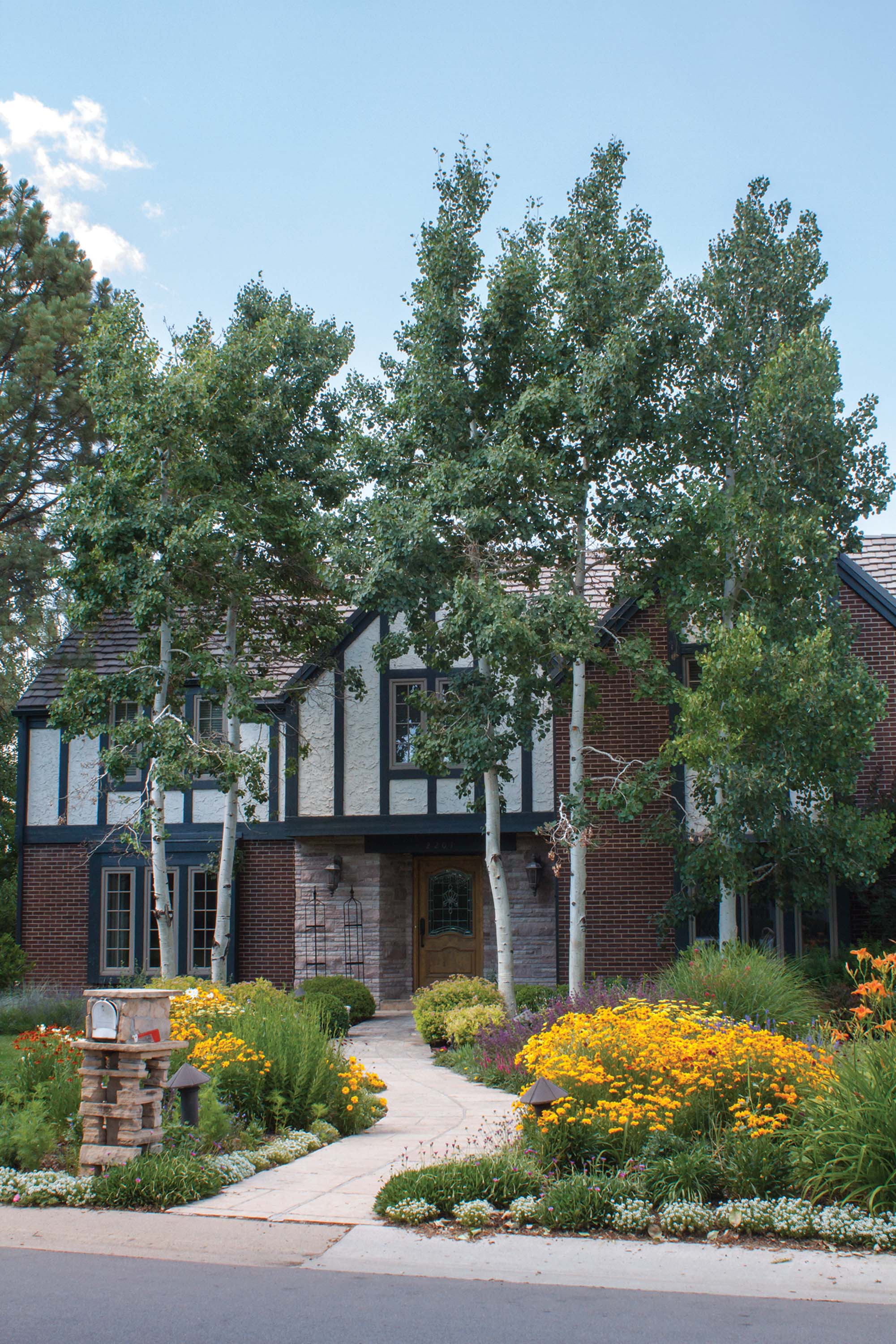
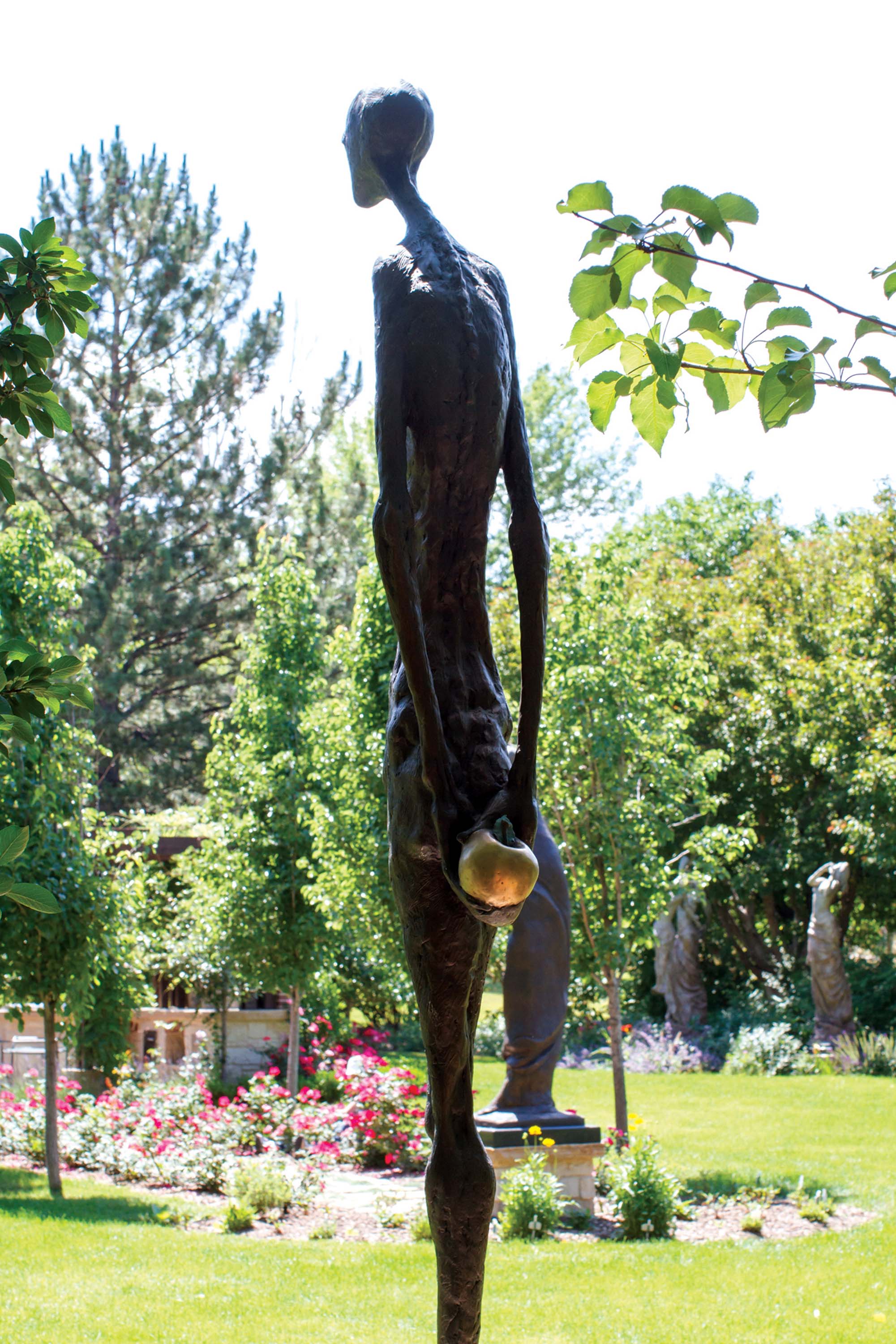
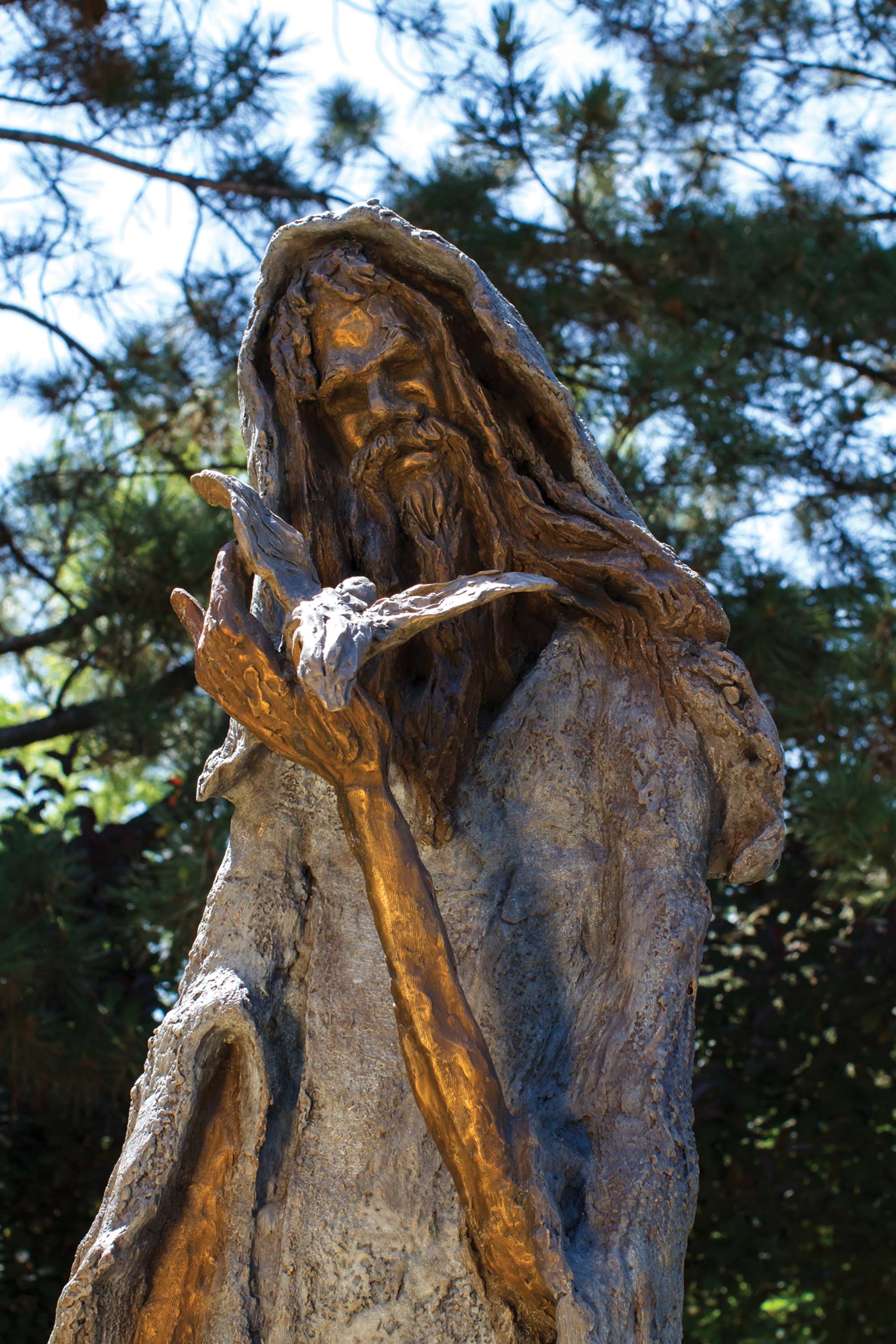
No Comments